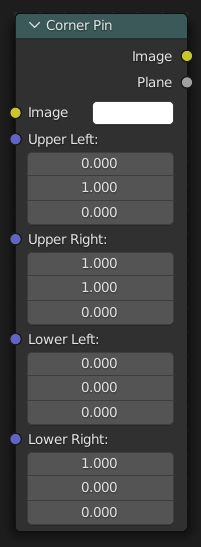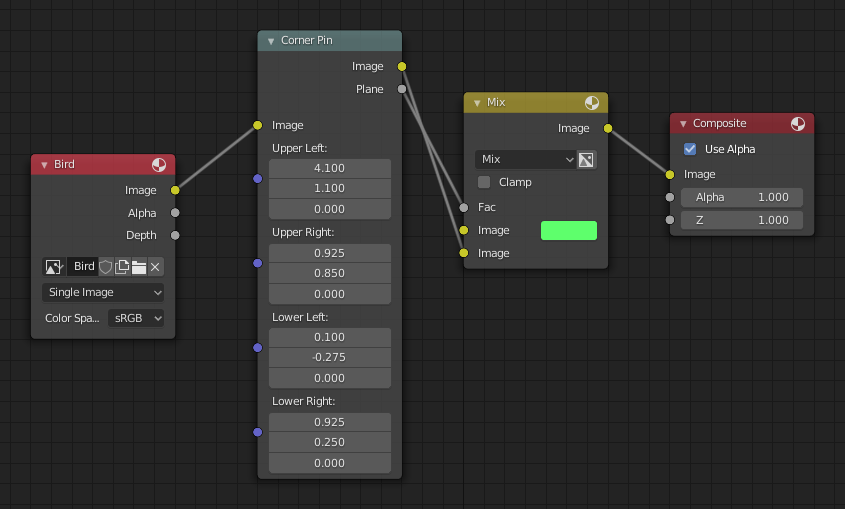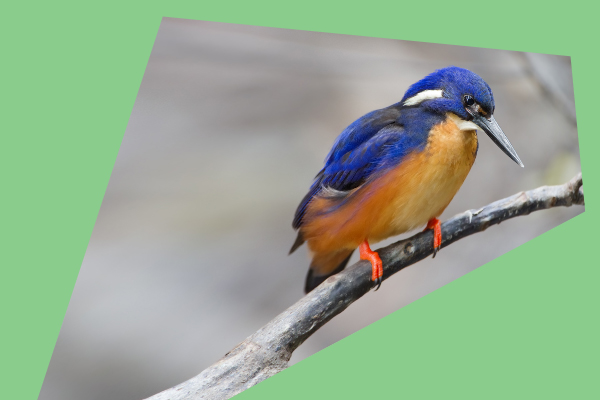Corner Pin Node¶

The Corner Pin node uses explicit corner values for a plane warp transformation. It works like the Plane Track Deform node, but without using ”plane track” data from the Movie Clip Editor.
Inputs¶
- Image
Standard color input.
- Corners
Four vector inputs to define the plane warping. (Z component of vector inputs is ignored.)
Properties¶
This node has no properties.
Outputs¶
- Image
Standard color output. (The image after distorting.)
- Plane
A black-and-white alpha mask of the plane.
Example¶

An example of the Corner Pin node.¶

An example of the distorted image.¶
In the example above, the image of the bird is distorted by the vectors specified by the Corner Pin node.